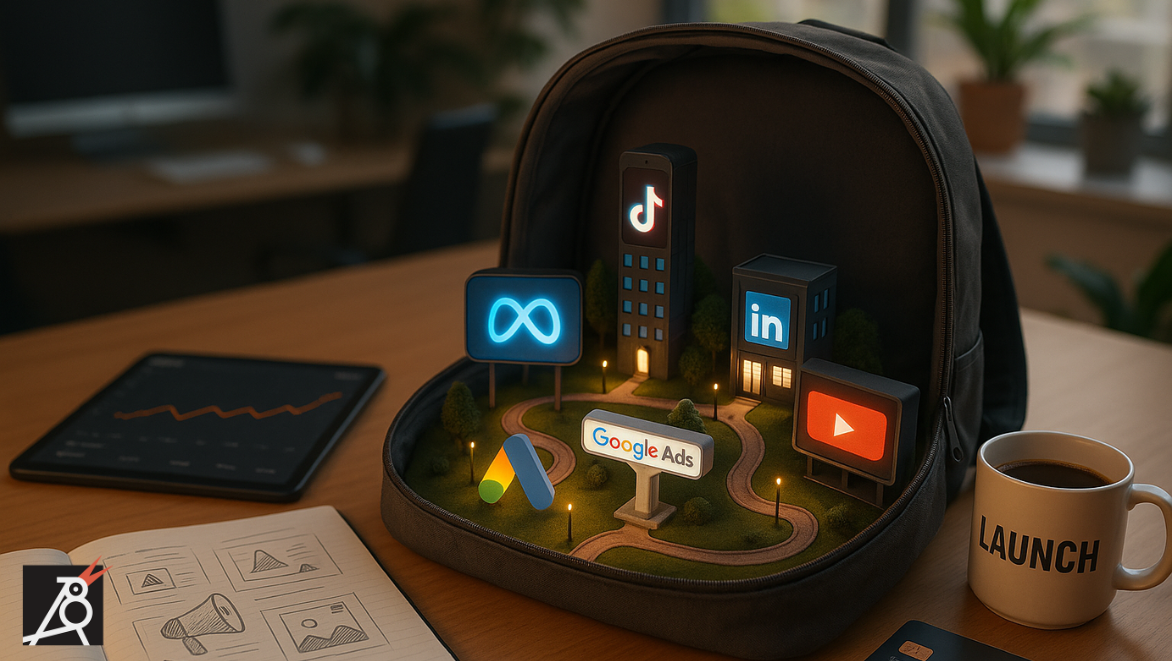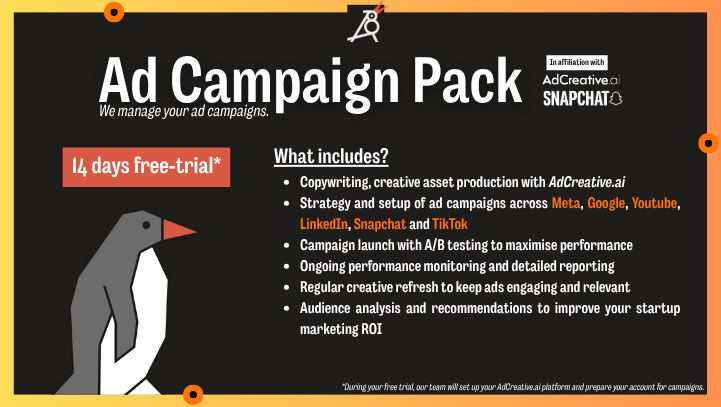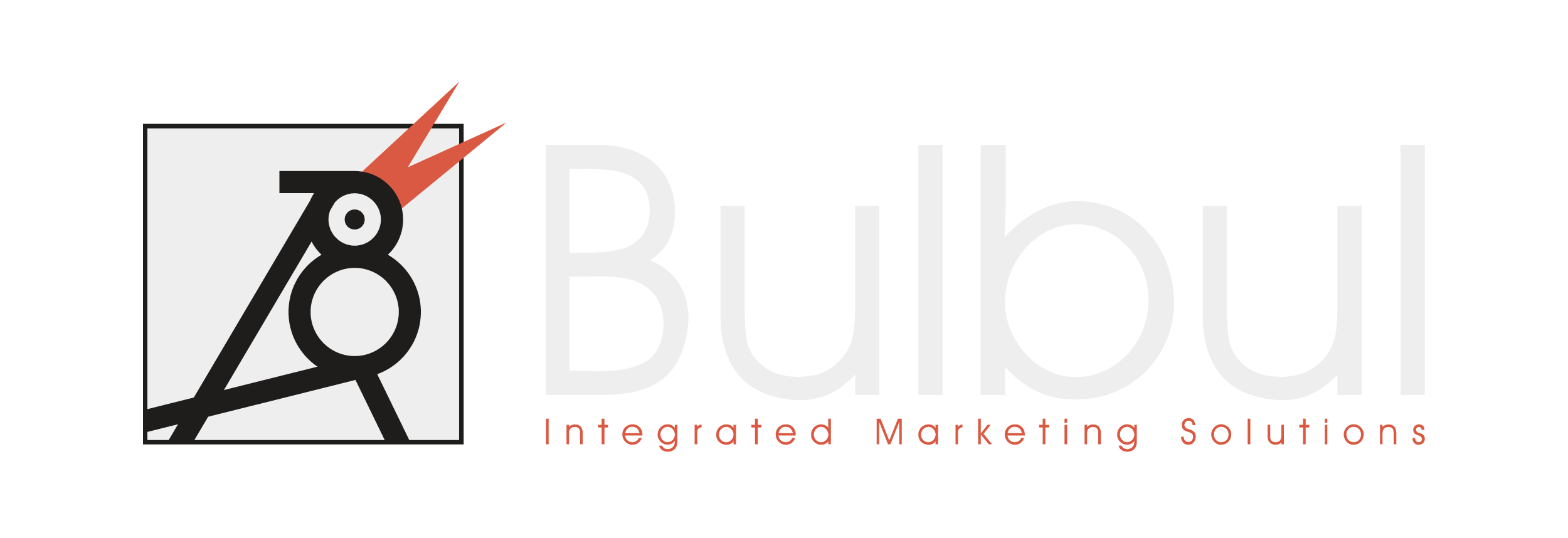The Winners of the 2025 Ad Game: Omnichannel Marketing in Action

In this article, we explore why omnichannel marketing is dominating in 2025, how startups can master it, and the exact steps we use to connect with customers, create seamless experiences, measure what matters, and grow across channels without wasting budget.
The digital ad world is no longer about running campaigns on one or two platforms — it’s about orchestrating them all. From Google Ads to TikTok, LinkedIn to YouTube, and Meta to emerging platforms, omnichannel marketing has become the winning play for brands that want both reach and relevance.
What Is Omnichannel Marketing?
Omnichannel marketing is a strategy that delivers a unified, personalised brand experience across every customer touchpoint — online and offline — to create consistent messaging and stronger engagement.
Rather than treating each channel separately, we integrate them into one seamless journey. This means a customer might first discover your brand via a TikTok ad, later see a LinkedIn post, click a Google retargeting ad, and finally convert through an email offer — all while feeling like it’s part of the same conversation.
Why 2025 Belongs to Omnichannel Marketing
In 2025, audiences expect brands to “be everywhere” while also being relevant. Omnichannel marketing allows us to show up in multiple places without fragmenting the message.
According to a HubSpot report, brands using omnichannel marketing retain 89% more customers compared to single-channel campaigns. This isn’t about chasing every platform — it’s about strategic placement, storytelling, and timing.
How We Connect with Customers Across Channels
We connect with customers by focusing on intent, context, and emotional triggers, not just demographics. This is where omnichannel marketing shines — because we can follow the customer’s journey, not force them into ours.
Key methods we use:
- Mapping audience behaviour across devices
- Using consistent creative themes across ad formats
- Adapting content for platform-specific culture and tone
When we connect with customers in this way, they feel seen — and that’s where loyalty starts.
How We Create Seamless Experiences for Every Touchpoint
We create seamless experiences by aligning messaging, visuals, and offers so the customer never feels like they’re starting over.
Omnichannel marketing isn’t just about being present; it’s about continuity. From the first ad impression to the last post-purchase email, the look, feel, and tone match.
How We Measure What Matters to Drive Growth
We measure what matters — and that means going beyond impressions and clicks. For omnichannel marketing, the most important KPIs are engagement quality, conversion rate by channel, customer lifetime value, and ROI per touchpoint.
Tools we rely on:
- Cross-platform analytics dashboards
- A/B and multivariate testing
- Attribution models to see the true value of each channel
By measuring what matters, we avoid wasting budget and double down on the creative and channels that actually perform.
How We Grow Across Channels Without Wasting Budget
We grow across channels by continuously reallocating spend to the platforms with the highest returns. With omnichannel marketing, no budget stays locked into a poor performer.
Our approach:
- Weekly performance reviews
- Creative refreshes every 4–6 weeks
- Scaling winning ad sets quickly while testing new ones in parallel
This way, we grow across channels without simply “spending more” — we spend smarter.
Omnichannel Marketing Best Practices for Startups
For startups, omnichannel marketing can feel overwhelming — but with the right playbook, it’s manageable.
Our best practices:
- Start with 2–3 high-impact channels, then expand
- Keep creative consistent but tailored to each platform
- Track cross-channel performance from day one
- Invest in retargeting sequences
Common Mistakes and How to Avoid Them
Even the best-intentioned omnichannel marketing campaigns can fail if:
- Messaging is inconsistent across platforms
- There’s no attribution tracking
- Budget is split too thin across too many channels
- Creative goes stale
Avoid these by starting small, measuring obsessively, and scaling only what works.
Single Channel vs Omnichannel: When to Make the Move
Choosing between a single channel and omnichannel marketing depends on your goals, resources, and audience maturity.
When single channel makes sense:
- You’re in an early testing phase and need quick feedback
- Budget is limited and focus is critical
- Your target audience is highly concentrated on one platform
- You’re building an initial proof of concept for product–market fit
In these cases, we connect with customers by going deep on one platform — perfecting creative, messaging, and targeting before expanding.
When to switch to omnichannel marketing:
- Your single channel results have plateaued
- You see your audience engaging across multiple platforms
- You have the resources to manage cross-channel consistency
- You’re ready to scale brand awareness alongside conversions
Once we create seamless experiences across channels, we measure what matters — seeing how each touchpoint supports the others. That’s when we grow across channels without wasting budget.
Pro tip: Don’t jump into omnichannel marketing too early — but don’t wait so long that you miss your growth window.
The sweet spot is right after you’ve mastered one channel and have the creative assets to replicate success elsewhere.
Ready to Win the 2025 Ad Game?
Need help figuring it out? Our Ad Campaign Pack is made for you — we’ll build the right strategy for your needs and run it with you as your partner.

Here’s what’s inside:
- Copywriting, creative asset production, and targeting configuration with AdCreative.ai
- Strategy and setup for ad campaigns across top platforms
- A/B testing to maximise performance
- Ongoing performance monitoring and detailed reporting
- Regular creative refresh to keep ads relevant
- Audience analysis and recommendations to improve your startup marketing ROI
FAQ: Omnichannel Marketing for Startups
How is omnichannel marketing different from multichannel marketing?
Omnichannel marketing integrates all channels into a unified experience, while multichannel simply uses multiple platforms without integration.
What’s the best starting point for a startup?
Begin with 2–3 high-performing channels for your niche, ensure messaging is consistent, and expand gradually.
How long until we see results?
With the right targeting and creative, startups often see measurable improvements within 30–60 days.
Do we need a large budget for omnichannel marketing?
Not necessarily — it’s more about budget allocation and optimisation than size.
🤝 Bulbul is an official partner of AdCreative.ai, strengthening our expertise in AI-powered ad creation and campaign management for startups and fast-growing teams.




Comments are closed.